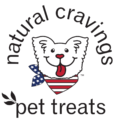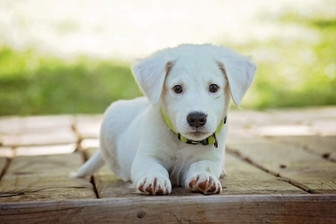Puppy 101: Everything you need to know.
Are you thinking of getting a puppy? If so, you’re in for a lot of fun! Puppies are adorable and provide plenty of companionship for a family. However, before you bring your new furry best friend home, there are a few things you need to know. This blog post will discuss everything new puppy owners need to know. From housetraining to feeding schedules, we have got you covered!

NEW PUPPY SUPPLIES: THE ESSENTIALS
When you bring home a new dog or puppy, you will need some essential supplies. You may need more than what is on this list, for example, a baby gate if you have an area that you don’t want your puppy in. However, this list will cover all of the basics.
The new puppy checklist:
– Kennel. A kennel or cage is a bedroom for your dog and a safe place to keep your puppy when you cannot watch them.
– Collar and leash. These two essential items can help you take your pup for a walk. A collar can also help you keep control of your pup, like moving them from one room to another. A collar also gives you a place to put their tags.
– Food and water bowls. Your new puppy will need bowls to be able to eat and drink out of.
– Food. Ensuring your pup has the correct type of food is essential to a happy and healthy life. If your adopted dog is younger than two years old, make sure you get puppy food to ensure they get the necessary nutrients.
Related: How to Read Dog Food Nutrition Labels
– Vet. Having a trusted vet is vital for your dog’s long life. Furthermore, dogs can easily live upwards of 15 years, so you’ll need to find a good vet asap.
– Toys. Giving puppies toys to play with keeps them happy and can also help curb any destructive behavior.
Shop the best natural chews for your new puppy at Natural Craving.
– ID tags. If your pup ever gets lost, having an ID tag ensures that they will get back to you safely.
HOW TO PREPARE FOR A PUPPY?
You can do a few things to prepare for your new puppy. One of the most important is to set up a space for them. This could be a kennel, an area blocked off with baby gates or even a room. Puppies need a place where they can feel safe and secure, so make sure their space is comfortable.
Related: June is Natural Foster a Pet Month
Before bringing home your new dog, take a few moments to puppy proof your home. This means taking steps to ensure your pup is safe and can’t get into things they shouldn’t. Start by removing any temptations your puppy might be drawn to. Be sure to pay close attention to wires, plants, blinds cords, trash cans, and anything else they might be able to chew or get into.

THE FIRST FEW WEEKS: ALLOW YOUR PUPPY TO ADJUST
One of the biggest struggles that new pet owners have is that their pup hides once they get their newly adopted dog home. This behavior is perfectly normal as your dog adjusts to its new life. Furthermore, these first few weeks can be critical to let your dog adjust.
Set Up A Puppy Potty Routine
One of the best things a new dog owner can do is establish a routine. This will help your pup adjust to their new home and make house training easier for both of you. A basic pattern could include things like feeding them at the same time each day, taking them for a walk in the morning and evening, and playing with them at a specific time.
Having this schedule posted somewhere in the house, like on the refrigerator, can be an excellent way for the entire family to stay on track with your new puppy.
Related: Working From Home With Your Pet: A Survival Guide
How often should I let my puppy out to pee?
Keeping your puppy on a schedule makes potty training easy. But how often should you be taking out your pup? The rule of thumb is one hour, plus an hour for every month old. For example, a five-month-old puppy will most likely have to potty every 6 hours. Crate training new puppies can be challenging but keeping them on a schedule is the key.
However, this can also change depending on how much water you let your pup drink. It’s often recommended to pick up all water a few hours before bed. That way, you won’t be getting up and down all night.
Adult dogs in good health can easily go for 8 hours between potty breaks, but you may want to keep them in a kennel while you’re away for that long until they adjust to their new life.
Senior dogs may need more frequent trips outside or possibly some incontinence wear if you notice they struggle to hold it.

Where Should My Puppy Sleep?
Depending on how old your puppy is will help you determine where they should sleep. Younger puppies should sleep in a warm, safe area like their kennel. As your pup adjusts and grows, you can start to transition them into sleeping in a dog bed or with you.
However, not all dogs do well out by themselves at night. So if you notice that your new pup gets into trouble when you aren’t watching them, you may want to continue to keep your dog in the kennel overnight.
CONCLUSION
Bringing home a new puppy is an exciting time, but it can also be overwhelming. By preparing ahead of time and setting up a routine, you can make the transition easier for you and your pup. Be sure to consider how often your puppy needs to pee and adjust your schedule accordingly. Most importantly, have patience as your dog adjusts to its new home.
Adopt don’t shop, and make sure you pick up some natural chews for your dog from Natural Cravings. Shop natural chews today.

